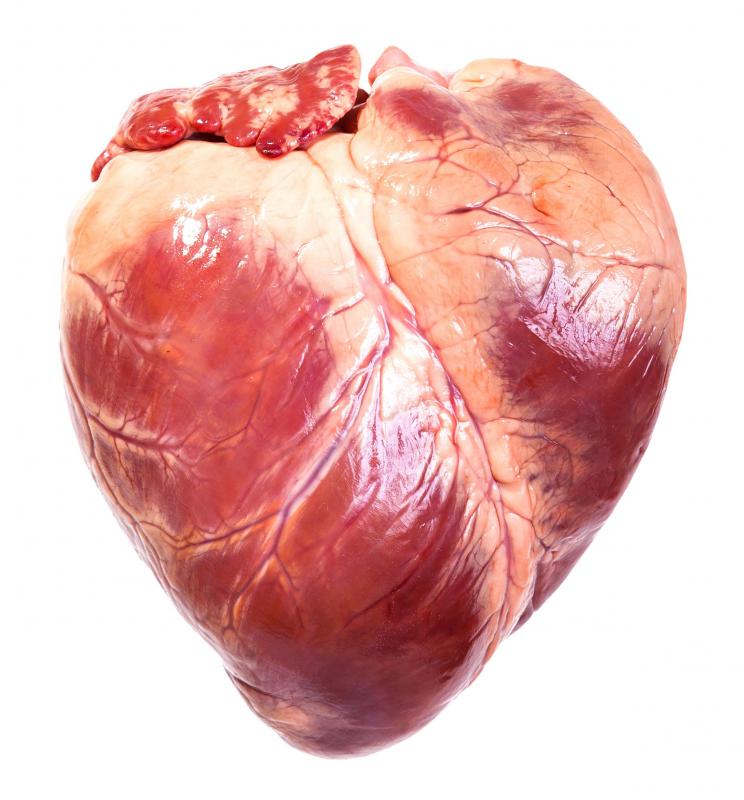At TheHealthBoard, we're committed to delivering accurate, trustworthy information. Our expert-authored content is rigorously fact-checked and sourced from credible authorities. Discover how we uphold the highest standards in providing you with reliable knowledge.
What Is the Posterior Descending Artery?
The posterior descending artery, which is also known as the posterior inter-ventricular artery, is a branch of one of the heart's main arteries. In most people, the posterior descending artery branches away from the right coronary artery, which is called right coronary artery dominance. In left coronary artery dominance, the posterior descending artery branches away from the left circumflex artery. With coronary artery co-dominance, the posterior descending artery branches off of both the right coronary artery and the left circumflex artery.
The human heart has four chambers. On the heart's left side is the left atrium on the top and the left ventricle on the bottom. On the right side of the heart is the right atrium at the top and the right ventricle at the bottom. The left side of the heart gets oxygenated blood from the lungs via the pulmonary vein. The aorta, which is the largest and longest of the body's arteries, carries the oxygenated blood from the left ventricle to the rest of the body.

The heart's right side receives oxygen-deficient blood and pumps it into the pulmonary arteries, which send the blood to the lungs to collect oxygen. The right and left pulmonary arteries branch away from the main pulmonary artery and carry blood to the corresponding lung. Except for the umbilical arteries in fetuses, the pulmonary arteries are the only arteries in the body that carry deoxygenated blood. The main pulmonary artery is the only major artery that doesn't erupt from the aorta.

The coronary arteries branch away from the aorta and extend to the walls of the heart. They supply blood to the atria, ventricles, and the heart's septum, which is the wall that divides the right and left sides of the heart. The right coronary artery supplies oxygen-rich blood to the walls of both ventricles and the right atrium. The left coronary artery distributes blood into its branches, the left anterior descending artery and the left circumflex artery.
The right coronary artery branch, called the posterior descending artery, provides the lower wall of the left ventricle and the lower portion of the septum with oxygen-rich blood. The left anterior descending artery provides the back part of the septum, the ventricle walls, and the front of the left atrium with oxygenated blood. The left circumflex artery affords the ventricle walls and the back of the left atrium with oxygen-rich blood.
AS FEATURED ON:
AS FEATURED ON:












Discuss this Article
Post your comments